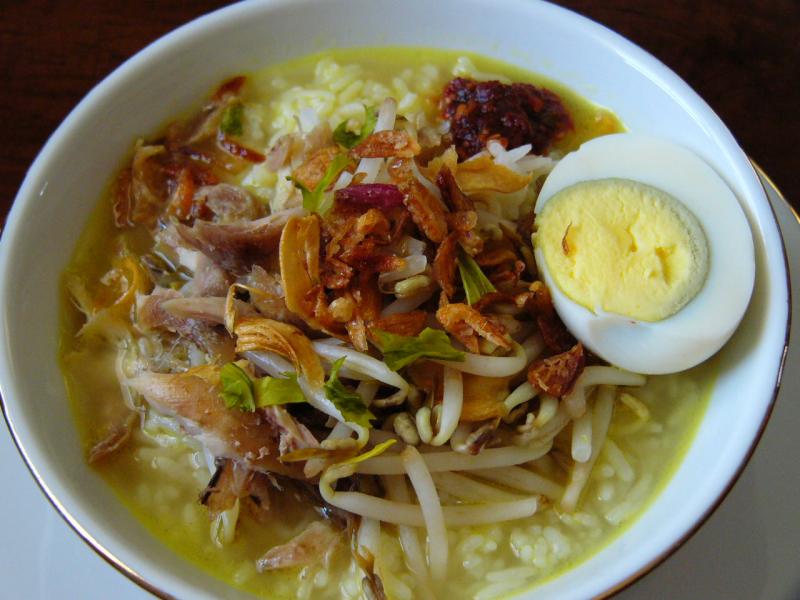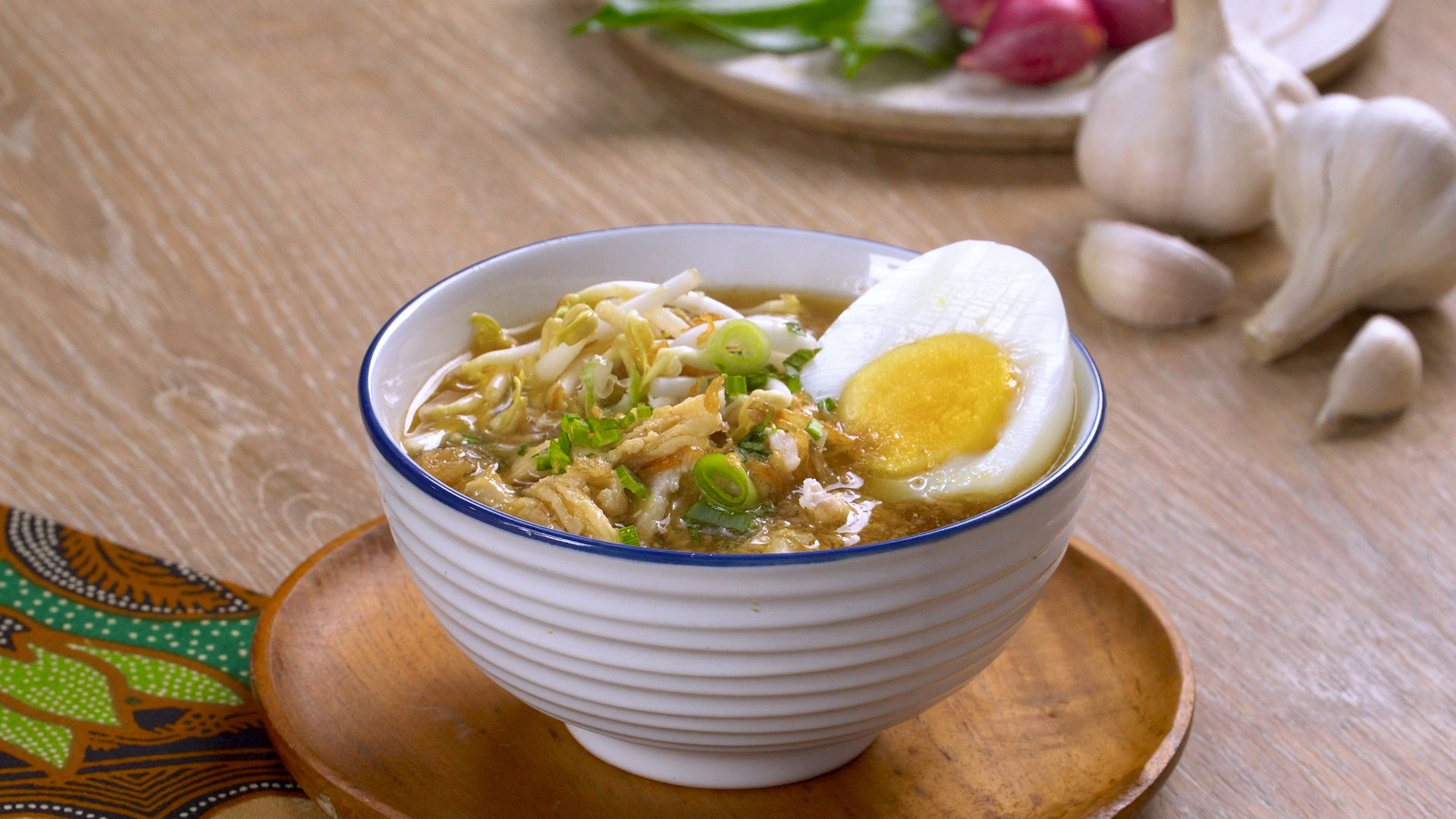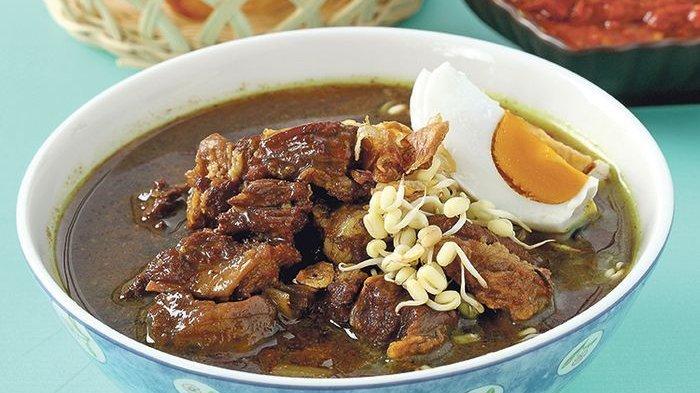
The Soul in the Small Bowl: Unraveling the History and Harmony of Soto Kudus
In the vast and vibrant archipelago of Indonesia, soup is not merely a dish; it is a cultural institution. Known as soto, this national comfort food exists in countless regional variations, each a unique reflection of its local history, agriculture, and philosophy. From the rich, coconut milk-based Soto Betawi of Jakarta to the herbaceous Soto Banjar of Kalimantan, every bowl tells a story. Yet, among this diverse family of soups, one stands out for its delicate subtlety, its iconic presentation, and the profound historical narrative it carries: Soto Kudus.
Served in a characteristically small porcelain bowl, Soto Kudus at first glance appears deceptively simple. It is a light, clear broth, often with a gentle golden-yellow hue, cradling tender shreds of meat, short bean sprouts, and a sprinkle of fresh celery and fried shallots. But to dismiss it as merely a light soup would be to miss the point entirely. This humble dish from the small city of Kudus in Central Java is a masterclass in balance, a testament to culinary ingenuity, and, most importantly, a living monument to religious tolerance and cultural harmony. To understand Soto Kudus is to take a journey back in time, to a pivotal moment in Javanese history where food became a medium for peace.

Deconstructing the Flavor: A Symphony of Subtlety
The magic of Soto Kudus begins with its soul: the broth. Unlike many of its soto brethren that rely on heavy spices or creamy coconut milk, the broth of Soto Kudus is defined by its clarity and nuanced flavor. It is typically made from a base of either chicken or water buffalo stock, simmered for hours with a carefully selected blend of aromatics. Turmeric lends its signature golden color and earthy notes, while galangal, lemongrass, and salam leaves (Indonesian bay leaves) impart a fragrant, citrusy, and slightly medicinal complexity. The result is a broth that is light on the palate but deeply savory and warming, designed to be sipped and savored without overwhelming the senses.
The choice of protein is where Soto Kudus reveals its most defining characteristic. The two primary versions are Soto Ayam (chicken) and the original, more traditional Soto Kerbau (water buffalo). The chicken version, with its tender, shredded meat, is more common and widely available today. However, the water buffalo version is the heart of the dish’s identity. Water buffalo meat, leaner and with a slightly richer, gamier flavor than beef, is slow-cooked until it becomes incredibly tender, falling apart at the touch of a spoon. This specific choice of meat is not a matter of taste, but a direct legacy of the region’s unique history.
Complementing the broth and meat is a minimalist but crucial selection of garnishes. Short, crisp bean sprouts (tauge) provide a burst of freshness and a delightful textural contrast. Finely chopped celery leaves (seledri) add a bright, herbaceous aroma, while a generous scattering of crispy fried shallots (bawang goreng) introduces a sweet, savory crunch that rounds out the entire experience. It is a composition where every single element has a purpose, contributing to a harmonious whole.
A Spoonful of History: The Legacy of Sunan Kudus

To truly appreciate Soto Kudus, one must look beyond the kitchen and into the 16th century. The city of Kudus was then a center of Hindu-Javanese culture. It was during this period that Sunan Kudus, one of the revered Wali Songo (Nine Saints) who propagated Islam across Java, established his base in the city.
Sunan Kudus was a brilliant and compassionate strategist. He understood that imposing a new faith through force would only breed resentment. Instead, he chose a path of acculturation and respect, blending Islamic teachings with existing local traditions. His most famous act of tolerance was directly related to food. Knowing that the cow was a sacred animal in Hinduism, revered by the local population, Sunan Kudus issued a decree forbidding his followers from slaughtering cattle.
Legend tells of a time when he tethered a cow in the courtyard of his mosque to attract the attention of the local Hindu community. When they gathered, he spoke not of conversion, but of respect for the animal, drawing parallels to a story in the Quran to foster a sense of shared values. This profound gesture of empathy and respect won the hearts of the people, making them receptive to his teachings.
As a direct culinary consequence of this edict, water buffalo became the protein of choice for the local Muslim community. It provided a red meat alternative without offending the sensibilities of their Hindu neighbors. Over time, this practice became deeply ingrained in the local culture and gave birth to its signature dish: Soto Kerbau Kudus. Therefore, every bowl of this soto is more than just a meal; it is a delicious, edible symbol of peaceful coexistence. It is tolerance served warm, a reminder that respect for others’ beliefs can be woven into the very fabric of daily life. This spirit of fusion is also physically immortalized in the city’s famous Menara Kudus, a mosque minaret built in the architectural style of a Hindu temple.
The Ritual of Eating: Customization and Comradeship

The experience of eating Soto Kudus is as important as the dish itself. It is traditionally served in a mangkok kecil, a small bowl about the size of a teacup. This unique presentation serves several purposes. Firstly, it ensures the soup stays piping hot from the first spoonful to the last. Secondly, its modest size is an open invitation to order another serving—a practice known as nambah—without feeling overly full.
A typical Soto Kudus warung (small eatery) features long communal tables laden with an enticing array of condiments and side dishes (lauk pauk). This is where the diner becomes the chef. The plain soto is a blank canvas, and each person customizes it to their exact preference. The essential trinity of condiments includes: kecap manis (thick, sweet soy sauce) for a touch of sweetness and darker color; fresh lime wedges (jeruk nipis) to add a bright, acidic kick that cuts through the richness; and fiery sambal, a chili paste that allows each diner to control their preferred level of heat.
Alongside the condiments is the glorious parade of side dishes, which elevate the meal into a feast. Dark, glistening satay sticks of braised quail eggs (sate telur puyuh) and chicken offal (sate usus ati ampela) offer sweet and savory bites. Crispy, golden potato fritters (perkedel kentang), fried tempeh (tempeh goreng), and various crackers (kerupuk) provide additional layers of texture and flavor. The act of choosing your sides, mixing your condiments, and personalizing your bowl is an integral part of the Soto Kudus ritual—a personal, interactive culinary journey.
An Enduring Legacy
Today, Soto Kudus has transcended its regional origins to become a beloved dish across Indonesia. From bustling street-side stalls in Jakarta to modern restaurants in Bali, its reputation for clean, comforting flavor has earned it a permanent place in the nation’s culinary hall of fame. While the chicken version is now more prevalent due to cost and convenience, connoisseurs will always seek out the authentic Soto Kerbau for a true taste of its historical roots.

Soto Kudus is a powerful reminder that food is never just about sustenance. It is a carrier of stories, a vessel of culture, and a bridge between communities. In its humble, small bowl lies a grand narrative of faith, diplomacy, and the enduring power of respect. To sit down to a bowl of Soto Kudus is to partake in this history—to taste the wisdom of a 16th-century saint and to celebrate a harmony that has simmered gently for centuries, as rich and comforting as the broth itself.


The History and Harmony of Soto Kudus pictures collections gallery
The History and Harmony of Soto Kudus is a nice pictures and stock photo for your computer desktop or your smartphone device (ipad, tablet, blackberry, iphone, and other device) and also for your personal use. Free available for desktop wallpaper or additional image collections for your all needs. And was uploaded by admit at date July 1, 2025. You can download it in your computer by clicking download button to save image... have nice day and have fun guys..
This 1 image in featured post from 0 Photos/images Gallery and awesome picture selections about The History and Harmony of Soto Kudus is available to download. "Download & Save" images/pictures/wallpapers now and this Is one of the post that listed in packed to Category is Foods directory, with image dimension/resolution size is 800 × 600 px and size image/picture file is 62 KB with original link post ID is : https://powae.pw/of-course-here-is-a-1200-word-article-about-soto-kudus/. Get download/save images in post and gallery, "download" images or "preview" it on a bigger image for spesification sample in Large size (full attachment size) here : [Download & View to Large size]. Just Simple way, in thumbnail or in Gallery. *Click images to view Large Size.We collect this wonderful image from online and choose one of the best for you. Pictures collection that posted here was carefully chosen and published by author after choosing the ones which are best among the others. So, ultimately we make it and here these list of best image for your inspiration and informational reason regarding the The History and Harmony of Soto Kudus as part of blogsite exclusive updates collection. So, take your time and find the best informations and pictures posted here that suitable with your needs and use it for your own collection and personal use. About Image information: Image has been submitted and You are able to give your opinion as evaluations to our web site value.
Don't forget to comment if you interest with this images, you can share this post to social media like as facebook, twitter, google+, pinterest, stumbleupon, and more. just click social media buttons for share this post The History and Harmony of Soto Kudus Now. :)
Thanks for your visit, I hope you happy come to opo wae, wis opo wae, and get what you're looking for. And hope sometimes you will come back again here. All you need to do is help us develop by discussing this The History and Harmony of Soto Kudus if you like it "leave your comment". have fun, Thank you.




